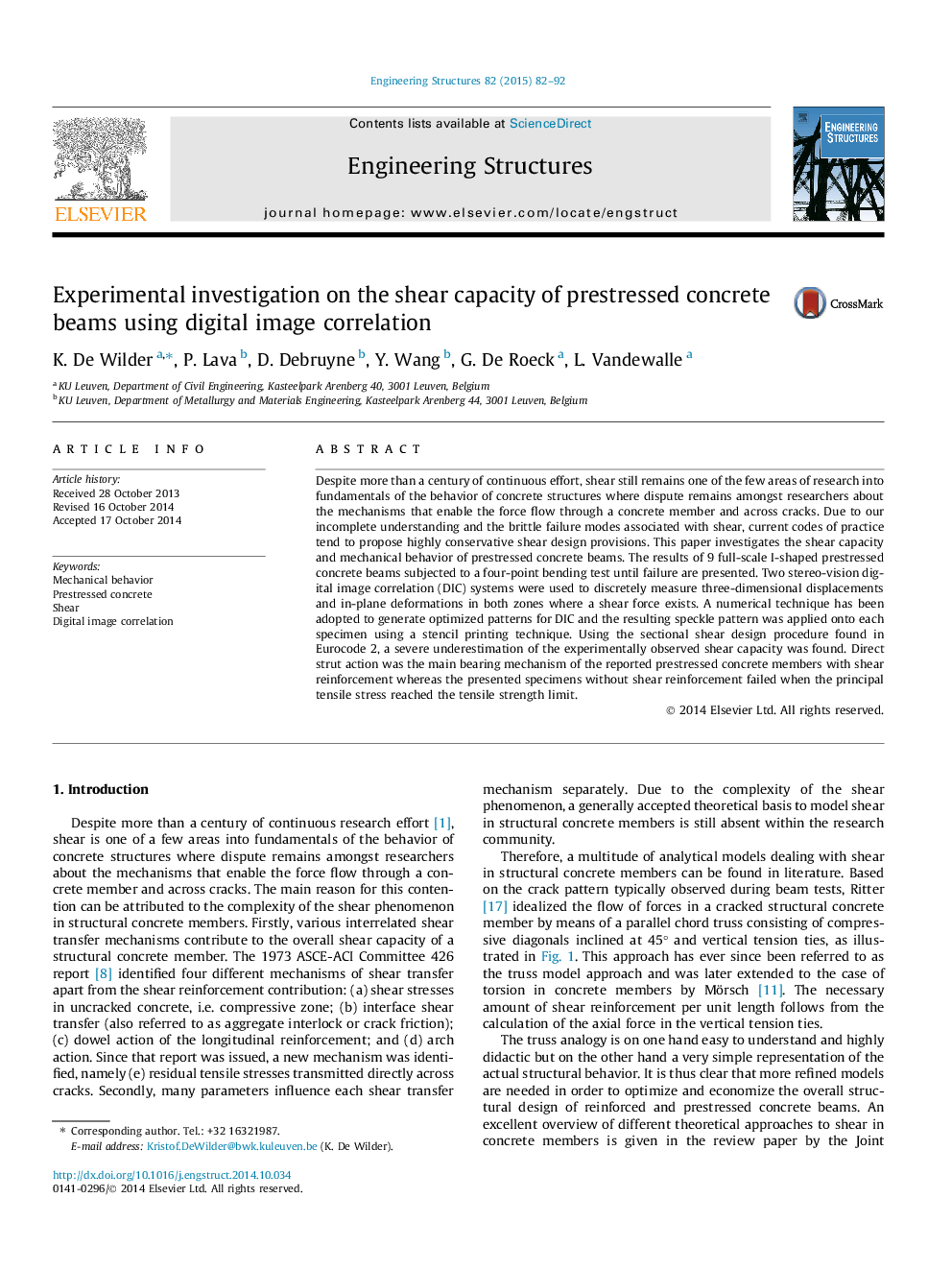| Article ID | Journal | Published Year | Pages | File Type |
|---|---|---|---|---|
| 6740641 | Engineering Structures | 2015 | 11 Pages |
Abstract
Despite more than a century of continuous effort, shear still remains one of the few areas of research into fundamentals of the behavior of concrete structures where dispute remains amongst researchers about the mechanisms that enable the force flow through a concrete member and across cracks. Due to our incomplete understanding and the brittle failure modes associated with shear, current codes of practice tend to propose highly conservative shear design provisions. This paper investigates the shear capacity and mechanical behavior of prestressed concrete beams. The results of 9 full-scale I-shaped prestressed concrete beams subjected to a four-point bending test until failure are presented. Two stereo-vision digital image correlation (DIC) systems were used to discretely measure three-dimensional displacements and in-plane deformations in both zones where a shear force exists. A numerical technique has been adopted to generate optimized patterns for DIC and the resulting speckle pattern was applied onto each specimen using a stencil printing technique. Using the sectional shear design procedure found in Eurocode 2, a severe underestimation of the experimentally observed shear capacity was found. Direct strut action was the main bearing mechanism of the reported prestressed concrete members with shear reinforcement whereas the presented specimens without shear reinforcement failed when the principal tensile stress reached the tensile strength limit.
Related Topics
Physical Sciences and Engineering
Earth and Planetary Sciences
Geotechnical Engineering and Engineering Geology
Authors
K. De Wilder, P. Lava, D. Debruyne, Y. Wang, G. De Roeck, L. Vandewalle,
